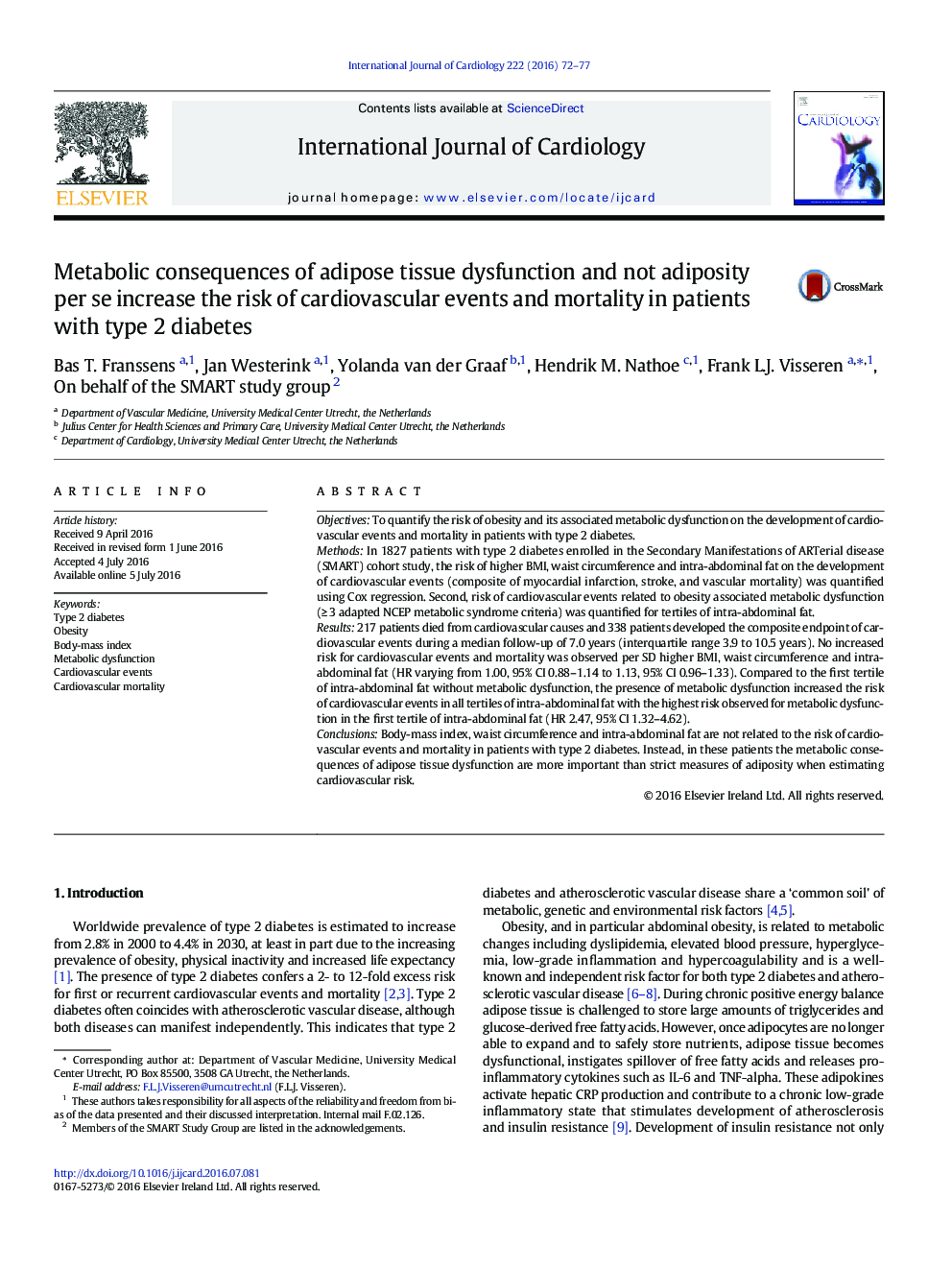| Article ID | Journal | Published Year | Pages | File Type |
|---|---|---|---|---|
| 5962599 | International Journal of Cardiology | 2016 | 6 Pages |
â¢1827 patients with type 2 diabetes were followed up for 7.0 (IQR 3.9-10.5) years.â¢Adiposity per se did not increase the risk of CVD events or CVD mortality.â¢Instead, metabolic consequences of adipose tissue dysfunction increased CVD risk.
ObjectivesTo quantify the risk of obesity and its associated metabolic dysfunction on the development of cardiovascular events and mortality in patients with type 2 diabetes.MethodsIn 1827 patients with type 2 diabetes enrolled in the Secondary Manifestations of ARTerial disease (SMART) cohort study, the risk of higher BMI, waist circumference and intra-abdominal fat on the development of cardiovascular events (composite of myocardial infarction, stroke, and vascular mortality) was quantified using Cox regression. Second, risk of cardiovascular events related to obesity associated metabolic dysfunction (â¥Â 3 adapted NCEP metabolic syndrome criteria) was quantified for tertiles of intra-abdominal fat.Results217 patients died from cardiovascular causes and 338 patients developed the composite endpoint of cardiovascular events during a median follow-up of 7.0 years (interquartile range 3.9 to 10.5 years). No increased risk for cardiovascular events and mortality was observed per SD higher BMI, waist circumference and intra-abdominal fat (HR varying from 1.00, 95% CI 0.88-1.14 to 1.13, 95% CI 0.96-1.33). Compared to the first tertile of intra-abdominal fat without metabolic dysfunction, the presence of metabolic dysfunction increased the risk of cardiovascular events in all tertiles of intra-abdominal fat with the highest risk observed for metabolic dysfunction in the first tertile of intra-abdominal fat (HR 2.47, 95% CI 1.32-4.62).ConclusionsBody-mass index, waist circumference and intra-abdominal fat are not related to the risk of cardiovascular events and mortality in patients with type 2 diabetes. Instead, in these patients the metabolic consequences of adipose tissue dysfunction are more important than strict measures of adiposity when estimating cardiovascular risk.
